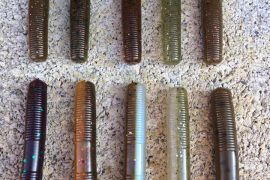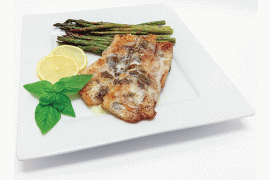
Learn how-to troll bunker spoons with wire-line for big striped bass.
I love fishing for striped bass. Casting soft-plastic baits on light spinning tackle is probably my favorite method, but it is not the best way to consistently catch cows. I also fish live baits on three-way rigs, drift eels under Redi-Rig floats, and anchor up with bunker chunks or clams. I will try any method to chase the majestic Morone saxatilis, but I hate wire-line trolling!
I fish for recreation. My goal is to have fun and relax, but make no mistake – I want to catch fish. I know wire is one of the best ways to get fish in the boat, but putting out 150 or 300 feet of stainless steel behind the boat and using the “broom sweep” technique for jigging bucktails or parachutes is hard work! On top of the physical toll it takes on your arms and shoulders, the stainless wire can kink, cut up your thumbs, and backlash in the spool.

Over the last few years I have found a method of trolling that, while not new, solved all the problems that caused me to discount wire-line trolling as a top method for targeting stripers.
READ ABOUT NEW JERSEY LURE MAKER TONY ARCABASCIO’S TONY MAJA BUNKER SPOON
Tweak the Spoon
When adult menhaden are the primary forage I am trying to imitate, bunker spoons rather than bucktails are what I troll when targeting large bass. Putting two rods out, I try either white or chrome on one rod and chartreuse on the other to see what color might work better. On the spoons, I replace the 8-ounce keel weight with a 12-ounce weight. This adds about 3 to 5 feet of depth with all 300 feet of wire out, which can make a difference in getting down to the largest stripers hanging near the bottom. I recommend adding Loctite or a similar adhesive to the threads of the screws; otherwise, over time the vibration from using the spoons can loosen them to the point of falling off if they aren’t regularly checked.

Choose the Right Rod
The curved…





